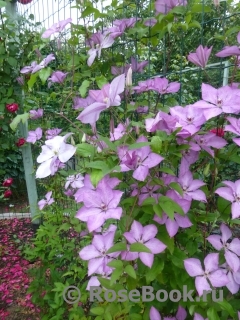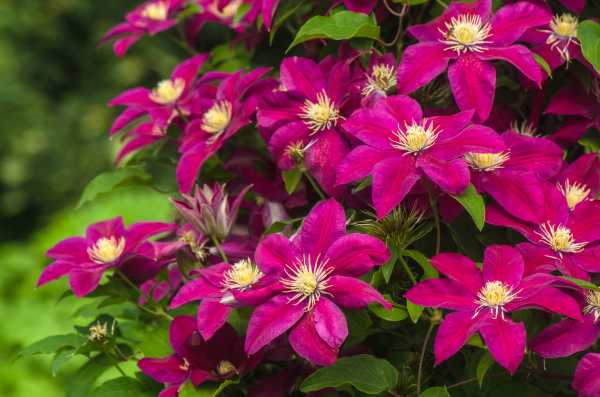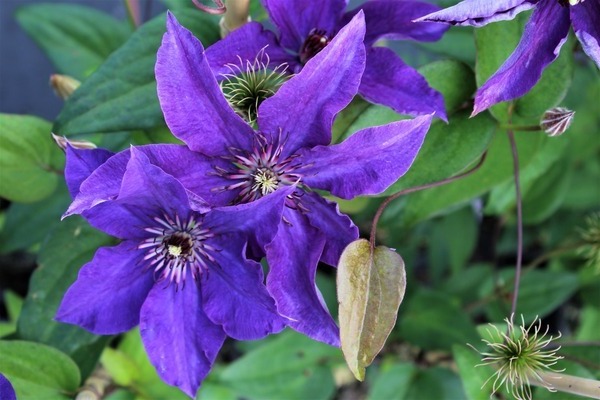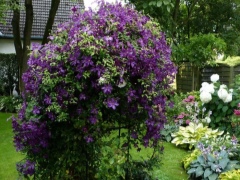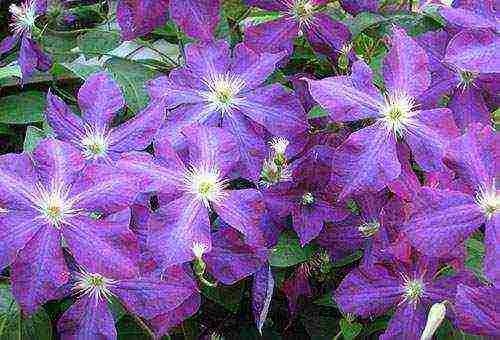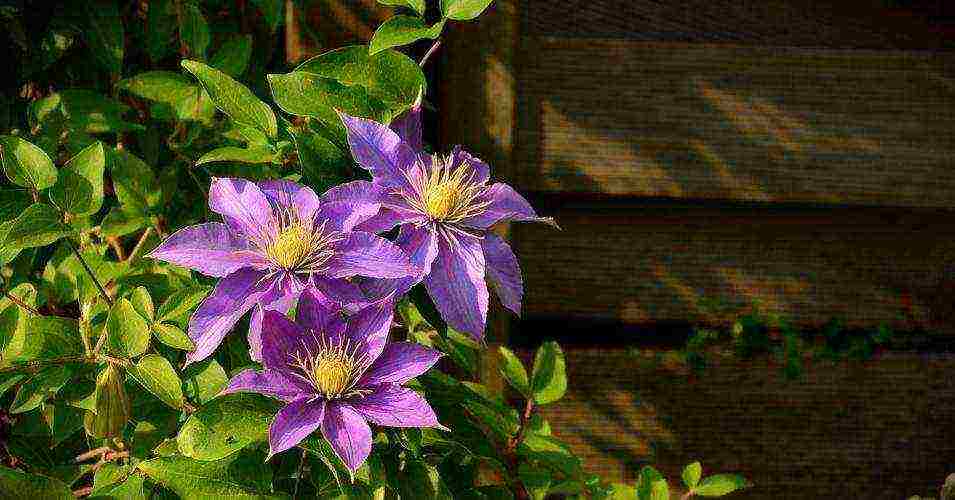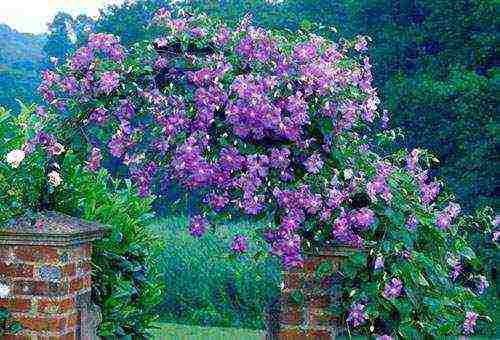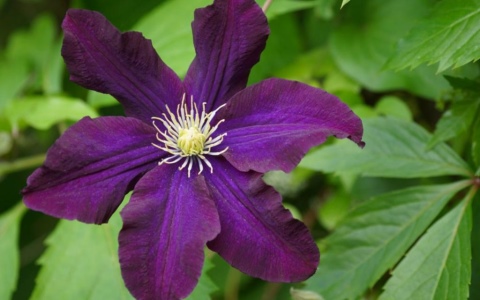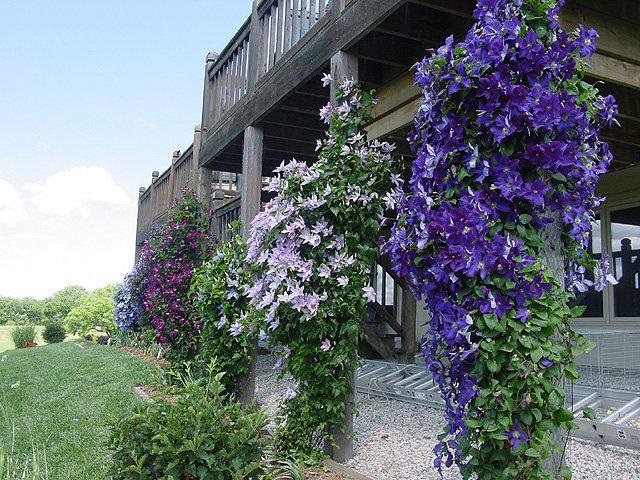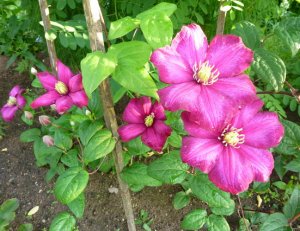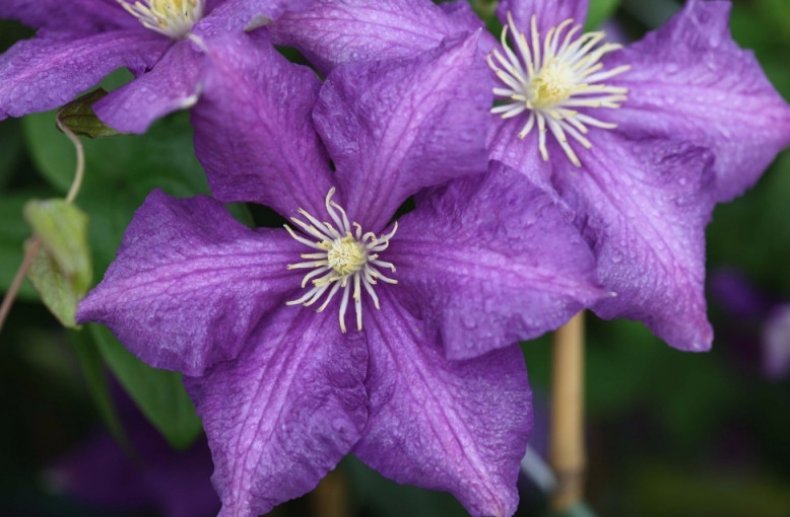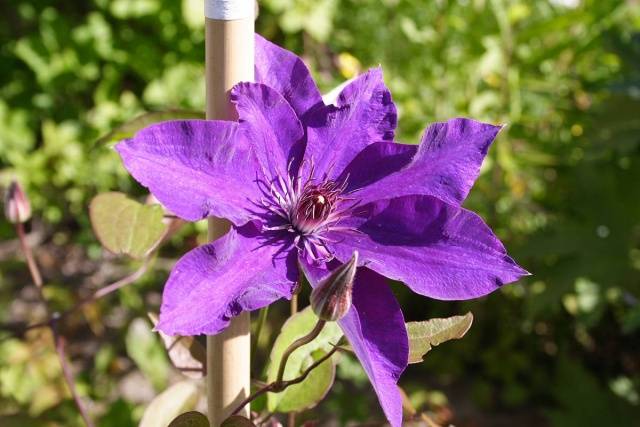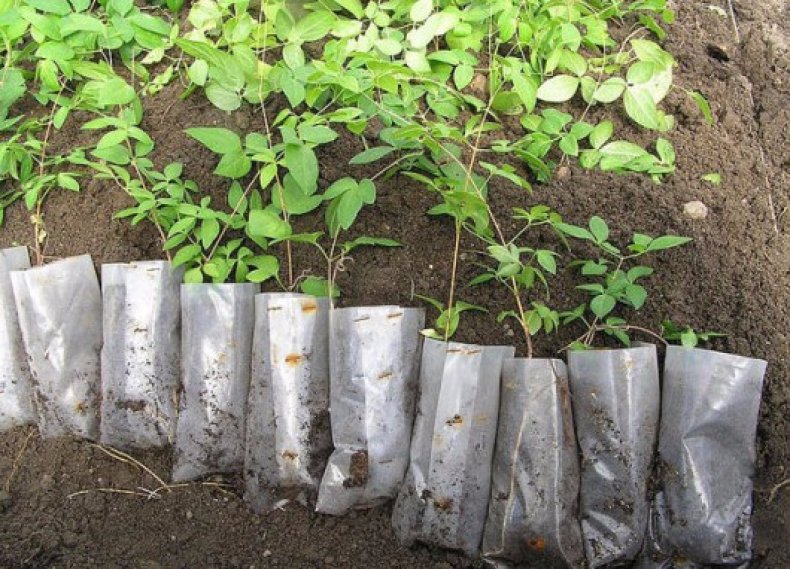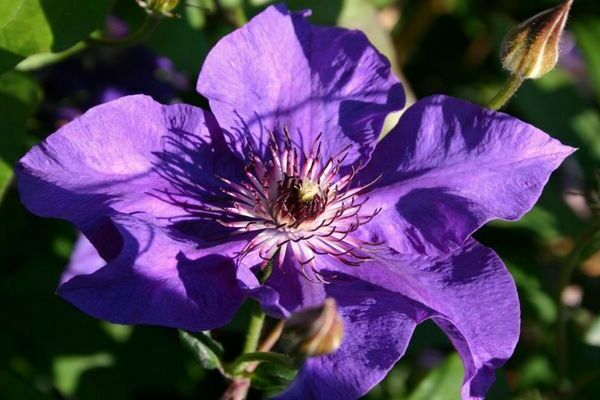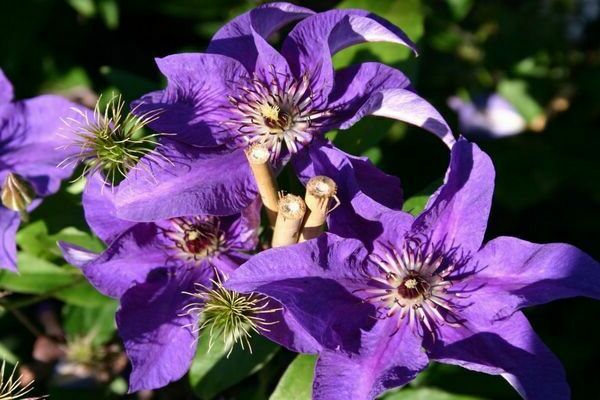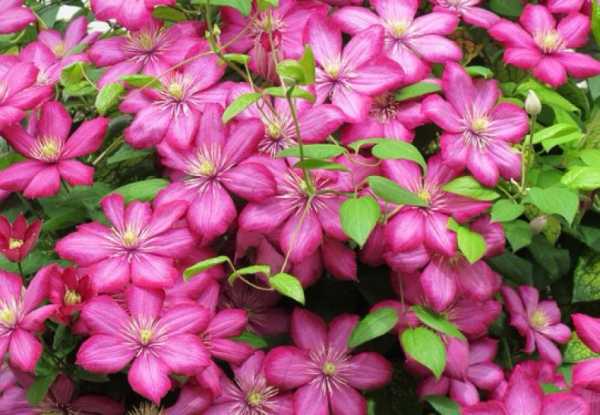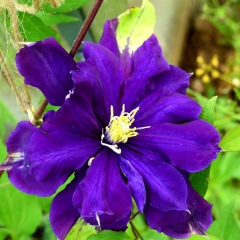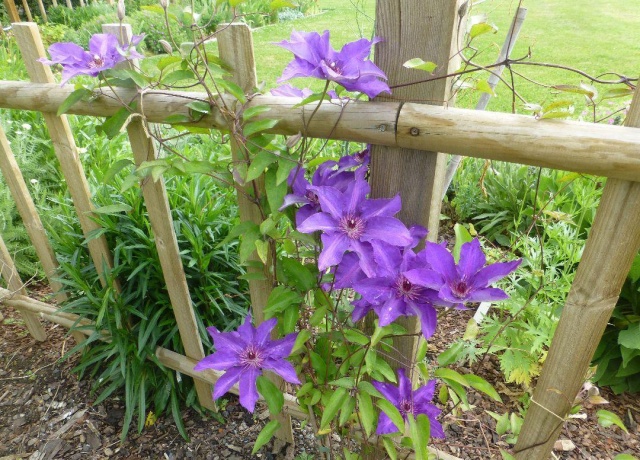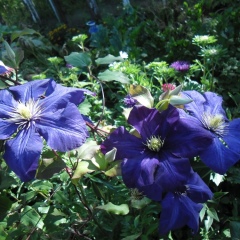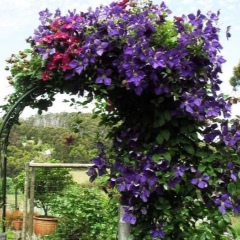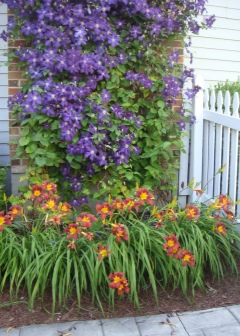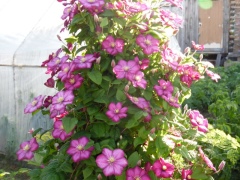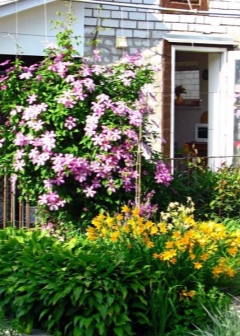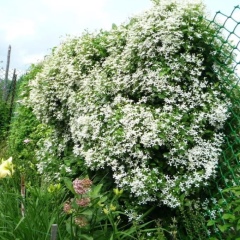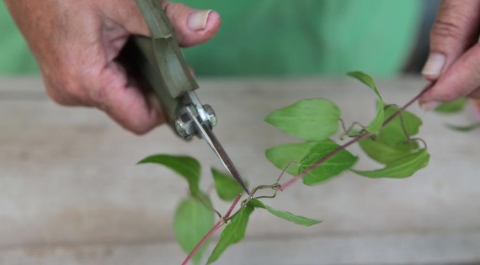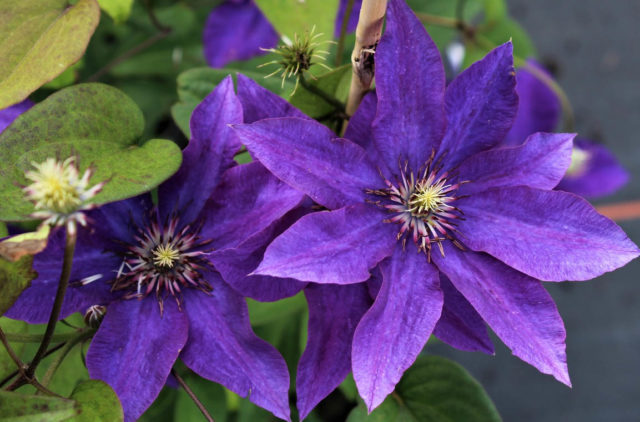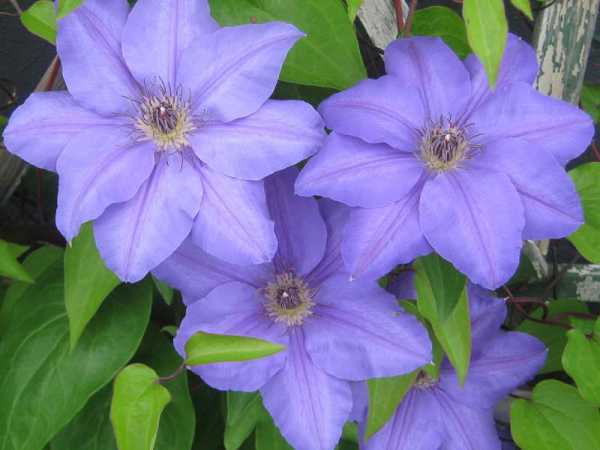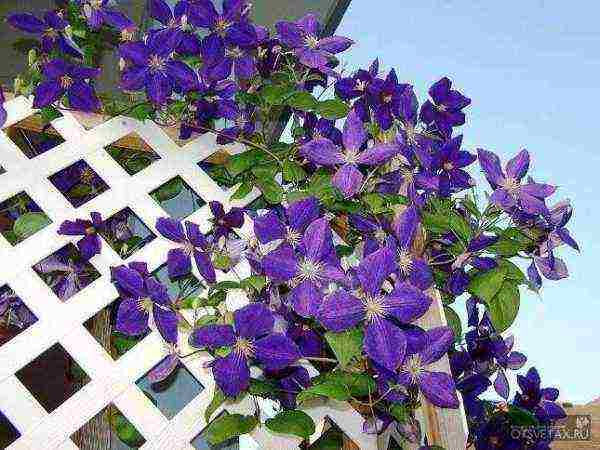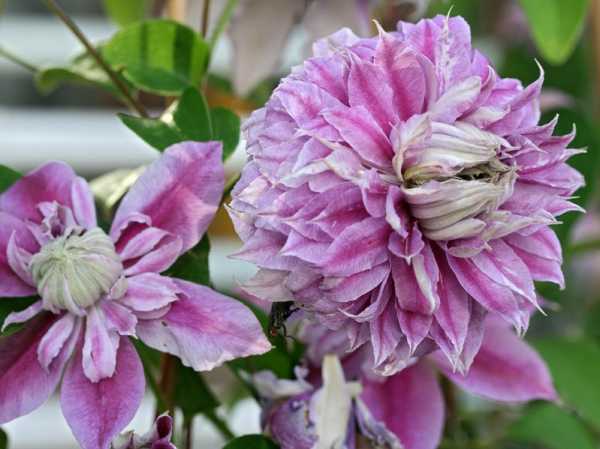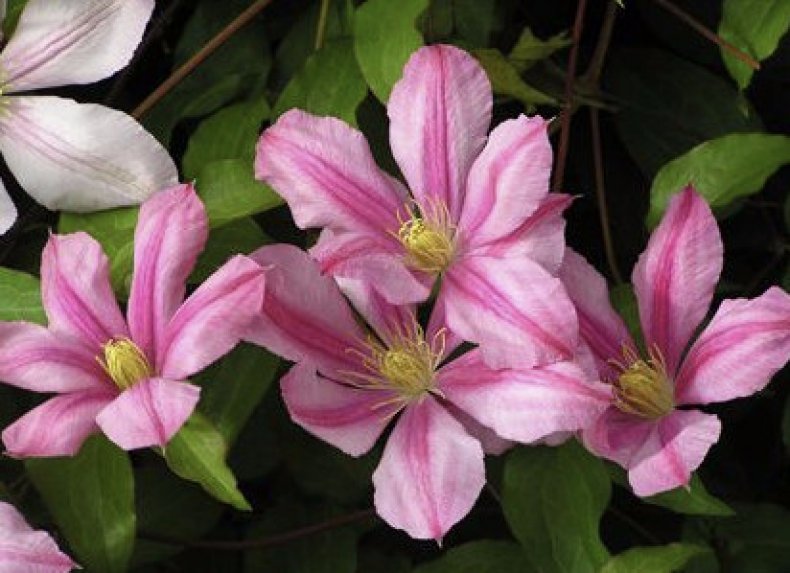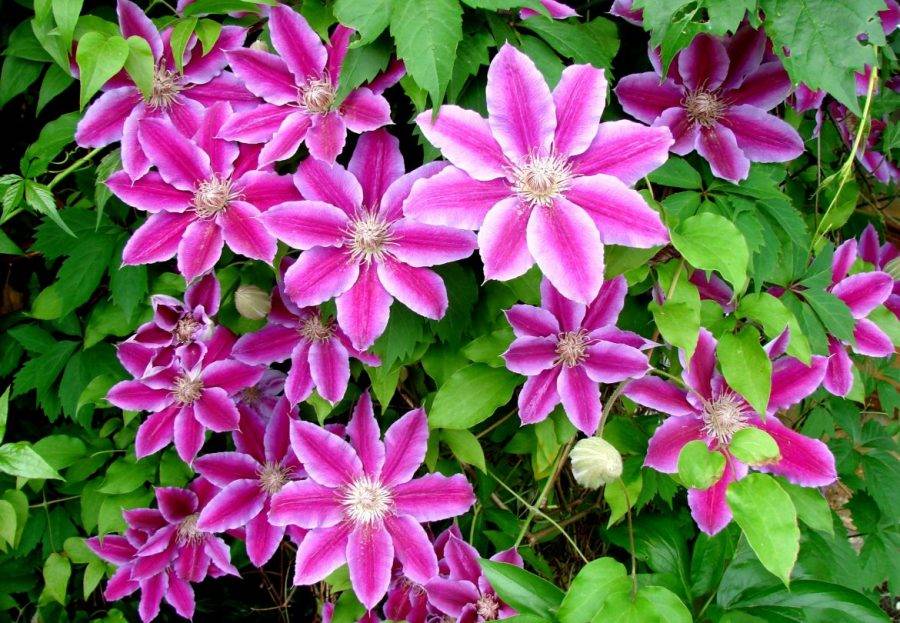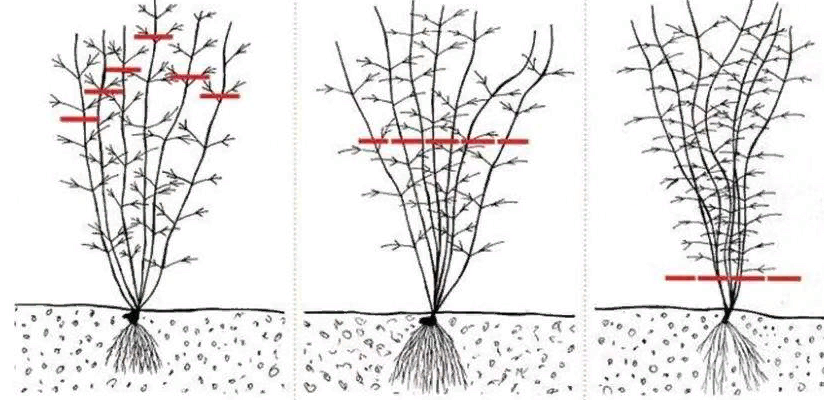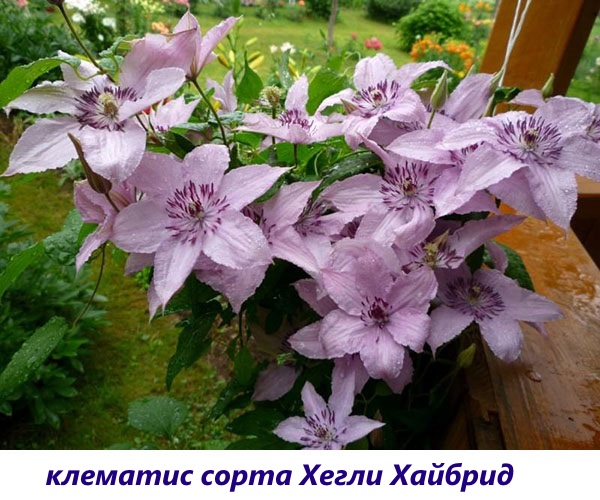Planting and transplanting clematis
Clematis seedlings are best purchased at the age of one or two years. Such planting material is available to many garden plant lovers. For an older liana, you will have to pay a more impressive amount.
As for the appearance of young seedlings, it is very diverse. It can be a bush with one stem no more than 20 cm in length, while inexperienced gardeners take the shoot as dry. Sometimes there are young clematis without a stem - a bunch of roots with small shoots from the buds.
When is the best time to plant or transplant clematis
The optimal period for transplanting is spring or autumn. If you need to transplant a vine from a container into open ground, you can choose any season, except for the winter cold.
If the plant was purchased in late autumn and the onset of cold weather does not make it possible to plant a vine in the garden, you can dig a bush in a place sheltered from drafts and reliably cover it with a layer of earth of at least 20 cm.
Another option for storing clematis until spring is in a room where the temperature does not rise above +5 degrees. Otherwise, the vine will grow strongly, and in the spring it will take a long and painful way to take root in a new place in the garden. Sprinkle the root system of the plant with a mixture of sand and sawdust. Throughout the winter, you should carefully examine the clematis in order to prevent waterlogging of the roots and their decay.
Liana needs to be pinched regularly, this will help slow down the growth of shoots a little. On average, each pinching inhibits the growth of clematis for several weeks.
After landing in open ground, it is important for the first time to shade the vine from the sun. As for the period of planting plants in the garden, this can be done in early spring, since clematis can easily withstand frosts down to -6 degrees
Choosing a place for planting and transplanting clematis
- Lighting. Despite the fact that the first time (at least ten days) young plants need to be shaded from direct rays, for planting it is better to choose well-lit areas, but reliably protected from wind and drafts.
- The soil. The soil should be loose, moisture permeable, slightly alkaline or neutral. In addition, clematis needs a lot of nutrients for a lush flowering, but feeding with fresh manure and sour peat should be avoided.
- Humidity level. Considering that the length of the root system of clematis reaches one meter, it is impossible to plant plants in close proximity to groundwater. If it is impossible to choose another site for the vine, it is necessary to make an embankment in order to plant clematis on a dais. If clay soil predominates on the site, before planting clematis, you need to make a small ditch for the outflow of water and pour sand on the bottom.
In no case should clematis be planted in close proximity to a fence or wall. The distance between the plant and the fence should be at least 20 cm. The distance from the wall of the house to the creeper cannot be less than 30 cm, otherwise clematis will die from the water flowing from the roof.
Planting pit preparation
The size of the planting pit is 60x60x60 cm. A drainage layer of crushed stone or perlite with a height of at least 10 cm must be poured onto the bottom. The soil extracted from the pit cannot be used; it must be replaced with fertile soil.
As a rule, flower growers recommend adding to the substrate for clematis:
- Humus or california worm;
- Compost;
- Superphosphate - 150 g;
- Lime - 200 g;
- Dolomite flour - 400 g.
It is better to prepare an earthen mixture for vines a year before planting or transplanting. Thus, the soil settles well and is neutralized.
Support installation
The support for the vines is installed before planting. It is good if the structure can be removed for the winter period. The height of the support must be more than two meters, while the structure must be strong and withstand strong gusts of wind.
Planting or transplanting clematis
Before planting, you need to carefully examine the root system, if the roots are dry, the vine is placed in cold water for several hours.
Then, at the bottom of the planting pit, you need to pour a small tubercle of the substrate and put the plant on it. The roots must be spread over the entire area of the planting pit.
Roots, root collar and stem should be covered with substrate to a height of 10 cm. At the end, a depression should be made to prevent water from spreading after watering.
After planting under the plant, you need to pour a bucket of water and pour the earth under the bush throughout the entire growth period (until autumn). If the plant was planted in the fall and sprinkled for the winter, in the spring you need to remove the top layer of earth and, as the shoots grow, add the substrate until next fall.
Description of clematis of the second type of pruning
The second group is ideal for warm places. These plants bloom 2 times a year. In warm spring, the same result can be in the Middle Lane, provided that the plant reaches adulthood. In this case, the first flowering should be expected at the end of May.
A distinctive feature is flowering twice a year:
- The first occurs in the spring and is short-lived. Flowers are formed only on shoots that have survived the winter. Only hybrids bloom.
- The second flowering is already longer. It begins in the middle of summer and ends with the first frost. The buds of this period can also form on an annual shoot.
Pruning clematis of the second type of pruning
Pruning is fairly easy and systematic. The first time is done to refresh the plant after flowering for the first time. The second procedure falls on the late autumn phase. This is preparation for wintering. In this case, the stems are made shorter by 1-1.5 meters. The diseased processes are cut off completely.
Types of trimming
Each type of pruning is done for a specific purpose and has its own functions.
- First of all, regardless of which group the clematis variety belongs to, it requires sanitization, which is carried out in autumn or spring. The main point of such a procedure is to eliminate already non-viable processes, that is, dried, broken or diseased branches.
- In preparation for winter, clematis also needs to remove all available leaves, adhering to the rules characteristic of a particular group. This is considered the main type of pruning.
- Decorative pruning is carried out at the request of the owners and is arranged in order to make the shape of the bush more attractive and limit its growth. There are no special rules for decorative processing.
- Approximately once every five years, clematis undergoes anti-aging pruning, carried out immediately after the flowering of the buds. During the procedure, all old vines are removed and all conditions are created for the appearance of new shoots. Rejuvenation is carried out in two stages: removing part of the old branches in the first year and another part the next year.
Group features
Representatives of this group are considered one of the easiest to grow and breed. Clematis of the third pruning group are more suitable than others for decorating gardens in Russia, most of whose regions are distinguished by special climatic conditions with short summers and long frosty winters.
This group includes varietal clematis of different species (Zhakmana, Integrifolia, Vititsella), which are similar in that their flowers are formed on annually growing shoots. For the winter, they are cut off as much as possible, leaving no more than 30 cm of the stem. This pruning method has several advantages:
- takes a minimum of the gardener's time during autumn care;
- ease of sheltering the root zone of the plant;
- no need to worry about preserving the fragile and long stems of the plant.
Clematis varieties of the third pruning group are undemanding to pre-winter care. Even when the stems freeze to the level of the soil, they grow again, and if new shoots have not appeared even in the spring, then clematis will grow in a year - with proper shelter, the roots retain their vitality.
Prolonged flowering (up to three months) is distinguished by the clematis varieties included in the 3rd group of pruning. The varieties Miikla, Huldine, Vilhelmine are distinguished by late flowering. This is due to the fact that the vine sets buds only on young shoots. This leaves an imprint on the formation of the bush: every year its bush should be cut out completely, leaving stumps no more than 15 cm high (one or two buds). This is quite enough for the vine to fully revive.

Clematis varieties of the 3rd pruning group, the photos of which we have posted in this article, grow quite quickly and if pruning is not done in a timely manner, very soon the bush will turn into a ball of twisted lashes, and you will have to forget about flowering. Therefore, when cutting off the shoots that have grown over the season, remember that the bush is not only renewed and retains its compact shape, but also retains varietal qualities.
Taking care of clematis
For abundant flowering, it is important not only to plant the plant correctly, but also to care for it.
Watering and feeding
For clematis, the amount of moisture is very important. Its roots do not tolerate drought and stagnant water
But its roots must always be moist. And the older the plant, the more water it needs. Its lack will affect the size of the flowers.
In the spring and summer, it is necessary to water once every 5-10 days. If the weather is hot, then every three days. In this case, you need to water abundantly so that the earth is well wetted and moisture reaches the roots. When watering, do not hit the central part with a stream of water.
During planting, you can dig in several pieces of plastic pipe with an inclination towards the roots. So the water will definitely flow where it needs to, and not spread over the surface.
For these purposes, you can also use plastic five-liter bottles with a cut-off bottom. It is also convenient to feed plants through such structures.
Top dressing for clematis very important. After all, they bloom profusely and every year they renew almost all of the green mass.
Feeding should be done at least twice a month. It is desirable to use fertilizers in liquid form after watering.
Garter and shelter for the winter
For many varieties, it is necessary to direct the growth of the vines. To do this, in the spring, the plant must be tied to a support. Over time, he will begin to braid the support on his own.
Only clematis of the Integrifolia group are not able to twine around the supports on their own. He needs constant help with the gardener's garter.
But even an adult flower must be periodically directed in the right direction. Otherwise, the vines can get very confused.
In autumn, clematis must be covered. This should be done with the onset of the first frost in dry weather.
You can use dry soil, peat or sand for this. The layer must be at least 15 centimeters high.
The air method can also be used. To do this, a wire elevation can be built over the plant or a box can be used. Lay a layer of roofing, film or roofing material on top.
Pruning
In the fall, before the onset of frost, the vines must be cut off. This is done to stimulate the growth of shoots and subsequent abundant flowering. The procedure must be done every year.
Cultivars that bloom twice a season should also be pruned twice. The first time is in the middle of summer, when the shoots of last year will fade. The second time in the fall, when new shoots will bloom. In this case, last year's shoots can be cut to the ground.
Varieties that bloom on last year's shoots must be cut off before sheltering for the winter. Cut off the shoots on which the seeds have formed. You can also remove weak shoots if there are a lot of them.
After answering the question of how to plant clematis, gardeners can decorate their garden with different colors.If everything is done correctly when planting, then clematis will delight you with abundant flowering. If you approach responsibly to caring for him, then he will delight with his appearance for more than one year.
Pruning clematis of different groups
By the type of pruning, all clematis are divided into three groups. It depends on whether they bloom on last year's shoots, this year's shoots, or both. Before you buy a clematis seedling, be sure to find out which group it belongs to, and write it down for yourself.
In the first year after planting, all clematis are cut at a height of 30 cm from the ground. This stimulates tillering. You can also increase the number of clematis shoots by laying one of the branches on the ground and sprinkling it with mulch or soil.
Clematis of the first pruning group
Clematis of the first pruning group bloom on last year's shoots, so they are not shortened in spring. You can prune the shoots immediately after flowering to a height of 1 m, and at the beginning of the new season, it is enough to remove the frozen or diseased parts of the vine and thin it out if necessary.
The group includes mountain clematis, large-petaled clematis (macro-metal), alpine clematis, flowering clematis, clematis patens, clematis florida. Varieties - Apple Blossom, Albina Plena, Lemon Dream, Markham's Pink, Purple Dream, Stolwijk Gold, Freckles, Elizabeth, etc.
Clematis of the second pruning group
The second group includes large-flowered early flowering clematis, which need low pruning. They bloom in late spring or early summer and first form the first wave of large flowers on last year's shoots, and then smaller flowers on young shoots.
If you have clematis from this group, then in the first couple of years, cut it to a height of one meter, and in subsequent years - up to one and a half meters. It is also worth doing with clematis, the variety of which you do not know.
To the second trimming group include clematis lanuginosa, some hybrids of clematis florida and clematis patens, as well as varieties Andromeda, Beautiful bride, Blue Light, Doctor Ruppel, Jan Paul II, Multi Blue, Nelly Moser, Niobe, The President, Warszawska Nike, William Kennett, Xerxes.
Clematis of the third group of pruning
Well, those clematis that are distinguished by flowering on young shoots or very strong growth need maximum pruning. They are shortened to a height of 15-20 cm, or at a height of 2-3 pairs of buds. Leaving shoots longer than 30-50 cm does not make sense - they still will not bloom and will only begin to thicken the plant. Such clematis bloom from late June - early July to late summer or even early autumn.
This group includes clematis witzella, clematis Zhakmana, clematis straight, clematis texensis, eastern clematis, clematis tanguica, clematis variegated. These include varieties - Blue Angel, Comtesse de Bouchaud, Etolie Violette, Jackmanii, Krakowiak Pink Mink, Mme Julia Correvon, Prince Charles, Princess Diana, romantika, Rouge Cardinal, Sweet Summer Love, Venosa Violacea.
Actually, this is why buying clematis from your hands is a bad idea. After all, without knowing the variety, you will not be able to provide vines with the correct care and pruning of the desired type, which means that you will not enjoy maximum flowering or you will go to it a long way of trial and error.
Summer clematis care - tips for lush flowering and good wintering
Learn how to properly care for clematis to keep it healthy and bloom luxuriously for the rest of the season!
How and when to trim correctly?
It is believed that pruning clematis in groups is more relevant for specialists, and amateurs, and especially novice gardeners, need not delve into the intricacies and adhere to general rules. In the fall, the shortening of the shoots is the same, regardless of the group. For the winter, it is better to shorten the shoots so that one or two buds remain above the ground. This allows the root systems to wake up faster in the spring, and then bloom more actively.
It is customary to combine pruning with pinching; it can be carried out in the summer at the beginning of June. This procedure promotes better branching of plants. If clematis belongs to the first or second group, then it should be pinched so that 30 centimeters remain from the ground to the selected mark. Further, when the lashes grow up, the height should be increased to 50 centimeters. Clematis from the third group are pinched for the first time at a height of fifteen centimeters, then at around 20-30 centimeters, and then at a height of half a meter.
The pruning itself is carried out using a conventional pruner or a sharpened knife. The cut should be done in such a way that at least 5 centimeters remain between it and the nearest kidney.
It is important to make an oblique movement of the tool so that moisture does not remain in the resulting place, which can provoke the appearance of rot

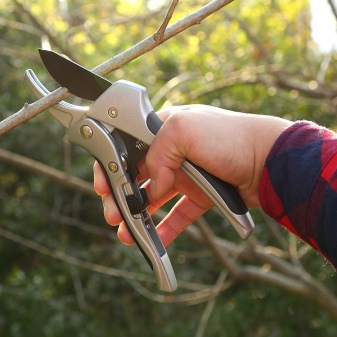
As a rule, a healthy and properly developing clematis has 10 to 15 lashes. However, in some species, the number of shoots is significantly increased, and therefore they need to be thinned out in order to avoid thickening. It is better to do this after clematis has flowered. All plants also require sanitization, which can be done regardless of the season. Broken or diseased branches are removed immediately.
By the appearance of clematis, it is almost impossible to determine which group it belongs to. In most cases, the only way to find out is to check with the seller or read the label. However, experts believe that the double petals of the buds are characteristic only for the second pruning group. Small-flowered clematis in most cases belongs to the first group. If in doubt, it makes sense to carry out a combined pruning and empirically determine which group clematis still belongs to.
Spring pruning is carried out at the beginning of the season, as it is necessary to be in time before the buds awaken and the juice begins to move. At the same time, sanitary and thinning treatment should be carried out. Many gardeners prefer the spring procedure, as this gives a clearer understanding of how much the plant should be shortened, which buds have already woken up, and which ones are frozen in winter and must be removed. Upon completion of the procedure, clematis is immediately attached to the existing support. Autumn pruning takes place anywhere from mid-October to late November.
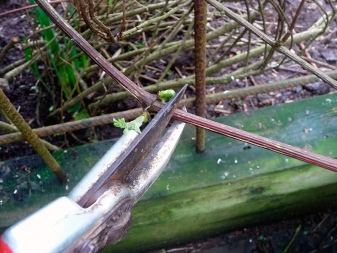
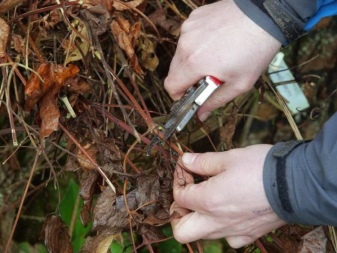
Clematis trimming groups
Thanks to the correct definition of the group, you can perfectly navigate not only in the rules for pruning clematis, but also in which plants they will combine best and in what place they will look most organic.
Description of clematis of the first pruning group
The species belonging to this group are called landscape and are subdivided into clematis with large petals, mountain and alpine.
For clematis of this group, the formation of buds on last year's shoots is characteristic. Fresh cuttings usually do not flower. They do not require any special care. The flowers are not too large in diameter, but they are located very close to each other, therefore they look no less impressive than large-flowered clematis.
Pruning of varieties of this group, in principle, is not required. It needs to be done only when the vine has become very large and powerful, and there is a need to rejuvenate the plant. The time for pruning depends on the purpose for which it is carried out. If the grower cares about the shape and direction of growth of the vines, then you need to cut it off in the summer immediately after the end of the flowering period. The advantage here is that shoots that need to be removed can be easily identified. In this case, only the faded part of the vine can be cut off.
Important! If pruning is necessary to rejuvenate an adult plant, then 2/3 of the long shoots are left, and those that have grown to the sides are completely removed. There are three pruning options:
There are three pruning options:
- when the stem grows back by 30 cm;
- when the stem reaches a length of about half a meter;
- cut long stems ≥1 m.
Description of clematis of the second pruning group
The second group of clematis is well acclimatized in warmer regions. There they can bloom twice a year. But in the Middle Lane, you can get the same result if a warm spring has stood out, and the plant is already old enough. Then, for the first time, they bloom at the end of spring.
The main feature in the description of this group is that they are capable of double flowering. The first spring bloom is short-lived.Flowers appear on those shoots that have wintered. At this time, only hybrid varieties bloom. The second period is distinguished by its duration and abundant flowering. It begins in July, and ends only with the onset of the first autumn frosts. The buds of the second flowering period appear on the tops of new annual shoots.
For clematis of the second type, light but regular pruning is carried out. In no case should strong pruning be carried out in the fall, since the plant will die before it has time to prepare for wintering. For the first time, refreshing pruning is carried out after the end of the first flowering. The second time - after the second in late autumn. Thus, clematis is prepared for wintering. The first faded shoots are cut off completely. In the fall, the stems are cut by 1-1.5 m.
Important! If the process is damaged, sick, became unattractive, it is removed completely
Description of clematis of the third pruning group
Clematis of the 3rd group bloom once, but abundantly and continuously. It is very easy to care for them, they are absolutely picky, therefore they are the most popular among flower growers.
The main features of the third group are:
- flowering duration is more than three months (beginning in July);
- these are herbaceous varieties that twist beautifully around any support, cling to both the wall and the trellis;
- they do not need special preparation for winter, as the stems are cut very short.
Note! The main visual distinction of this group is the very large flowers, the diameter of which reaches more than 20 cm.A suitable time for pruning is early spring or late autumn.
Pruning is carried out only with a very sharp cutting object, which must be disinfected before cutting the stems
A good time for pruning is early spring or late autumn. Pruning is carried out only with a very sharp cutting object, which must be disinfected before cutting the stems.
Vines are cut, leaving only 15-20 cm of the ground part. You can leave a half-meter stalk, but then you need to cover them more carefully for the winter. Flowering in this case will come two to three weeks earlier.
Important! Shoots are pruned at a distance of 0.5-0.7 cm from the bud
The main problems in growing
The main problems are:
- lack of flowering in the new season. Occurs due to improper wintering and pruning;
- fungal diseases such as gray mold, which occurs during cool rainy periods. Leaves rot and fall off almost instantly. Treatment with copper sulfate will help;
- viral diseases. The worst of them is the yellow mosaic, which is carried by some pests that are not afraid of the burning juice of clematis. This disease is incurable, clematis must be removed from the flower garden;
- the answer to the question why clematis has small flowers is non-compliance with the rules of care. Do not shade clematis, especially tall and large-flowered species. The main thing is enough to water and feed regularly.
Copper sulfate, laundry soap and insecticides sold in stores are the main ways to combat clematis diseases. Well, proper care will help prevent their development.
Clematis is a plant that is impossible not to fall in love with. You can't walk past him. Blue shades are like a small, beautiful cloud, light, delicate, reminiscent of a bride's outfit. Bright flowers against a background of lush greenery always bring a smile and a feeling of joy. Not all clematis have a pronounced smell, but you just have to gently rub the flower, and it smells like a delicate, barely audible aroma. By observing all the rules of care and choosing the right pruning scheme, you can achieve high growth and lush flowering.
Planting clematis in open ground
What time to plant
It is very important to plant clematis in the open ground at the right time, and you must carefully choose the right site for this.An area suitable for planting must be protected from drafts
You also need a sunny area, but it will be very good if it is in shade at midday. The soil is suitable for slightly alkaline nutritious loamy soil, it should also be well-drained and fertilized. This plant is recommended to be planted on a mound or an artificially made embankment. As a result, the long (about 100 cm) root will not start to rot due to the proximity of groundwater. You cannot feed clematis with sour peat or fresh manure. Do not plant a plant next to a fence or building (do not allow water from the roof to fall on clematis), a distance of at least 0.3 m should be kept between them.
It is possible to plant such a culture in open ground both in autumn and in spring. If you purchased a seedling in a container, then it can be planted in summer, autumn, and spring. If you purchased planting material in late autumn and were late with disembarkation, then it should be stored until spring. To do this, the seedlings are placed in a cool room (no more than 5 degrees), their root system must be covered with a mixture of sand and sawdust, which must be moistened. To restrain the growth of seedlings, it is necessary to regularly pinch.
Before planting, you need to carefully examine the root system of the plant. If it is dry, then it should be immersed in cold water for several hours before planting so that the roots can swell.
Spring planting
If the climate in the region is cool, then clematis is planted in open ground in spring, or rather, in the last days of April or the first days of May. A spring seedling must have at least one stem.
The size of the planting pit should be 0.6x0.6x0.6 m. At the bottom of the pit, it is necessary to make a drainage layer with a thickness of 10 to 15 centimeters, for this it is recommended to use broken brick, crushed stone or perlite. If the soil is poor, then this must be corrected by adding 1 bucket of peat and sand, 2-3 buckets of compost, 150 grams of superphosphate and 400 grams of dolomite flour into it (you need to mix everything very well, while experts recommend fertilizing the soil 1 year before landing). For the stems of the seedlings, it is necessary to install removable supports (if you wish, you can dig in stationary supports), their height should reach 250 cm. The supports are needed to support the plant in strong gusts of wind. On the surface of the drainage layer, it is necessary to fill the soil with a mound, on which the seedling should be installed
After its roots are carefully straightened, the pit is filled with a prepared soil mixture, while taking into account that the root collar should be buried 50–100 mm into the soil, the shoot trunk should also be in the ground up to the first internode. The hole should not be completely filled, 8 to 10 centimeters should remain to its upper edge
The planted bush should be watered with 10 liters of water. Then the surface of the excavation near the bush must be covered with a layer of peat. Throughout the spring and summer, the remaining recess should be gradually filled with soil. When planting between plants, a distance of at least 100 cm must be maintained.
LANDING KLEMATIS IN AUTUMN - HOW IT IS CORRECT TO PLANT KLEMATIS IN AUTUMN with Nina Petrusha on KLEMATIS TV
Autumn planting
In southern regions with a warm climate, this plant is planted in the autumn, or rather, in September or October, but the seedling must necessarily have developed vegetative buds. It is necessary to plant clematis in the fall in the same way as in the spring, but in this case, the planting hole is completely filled with soil. Then the surface of the soil around the seedling must be covered with a layer of dried foliage, and on top it is covered with any covering material, for example, lutrasil. In spring, near the plant, it is necessary to remove the soil to a depth of 8 to 10 centimeters; during the summer period, the resulting depression must be gradually filled with soil.Such indentations are made so that it is easier for the stems to break through to the surface of the site.

